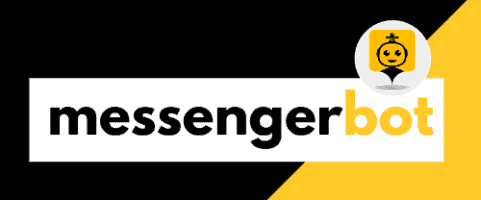In today’s fast-paced digital landscape, businesses are seeking innovative ways to enhance customer experiences and streamline operations. One solution gaining significant traction is automated chatbots, powered by advanced artificial intelligence (AI) and natural language processing (NLP) capabilities. These intelligent virtual assistants are revolutionizing how companies interact with customers, offering round-the-clock support, personalized service, and efficient problem resolution. As the demand for seamless digital experiences grows, automated chatbots have emerged as a game-changer, bridging the gap between human interactions and automated processes. This article delves into the world of automated chatbots, exploring their capabilities, applications, and the transformative impact they are having on customer service and beyond.
1. What is an automated chatbot?
1.1 Defining Automated Chatbots
An automated chatbot is a software application that utilizes artificial intelligence (AI), natural language processing (NLP), and machine learning to simulate human-like conversations through text or voice interfaces. It is designed to autonomously interact with users, comprehend their queries or inputs, and provide relevant responses or perform desired actions without requiring direct human intervention.
Automated chatbots leverage advanced algorithms and vast knowledge bases to interpret and respond to user inputs in a contextually appropriate manner. They can engage in back-and-forth dialogues, understand complex queries, retrieve information from databases, and even complete tasks such as scheduling appointments, making reservations, or processing transactions.
Key features of automated chatbots include:
- Natural Language Understanding (NLU): Ability to comprehend and interpret human language, including slang, misspellings, and contextual nuances.
- Intent Recognition: Identifying the user’s underlying intent or goal behind their query or statement.
- Entity Extraction: Detecting and extracting relevant entities (e.g., names, dates, locations) from user inputs.
- Contextual Awareness: Understanding and maintaining conversational context to provide coherent and relevant responses.
- Knowledge Integration: Accessing and leveraging extensive knowledge bases or external data sources to provide accurate and up-to-date information.
- Personalization: Adapting responses and interactions based on user preferences, historical data, and conversational patterns.
- Multilingual Support: Ability to converse in multiple languages, enabling global accessibility.
- Continuous Learning: Improving conversational abilities and knowledge through machine learning techniques and user interaction data.
Automated chatbots are widely employed across various industries, including customer service, e-commerce, healthcare, finance, and entertainment, offering 24/7 availability, cost-effective support, and enhanced user experiences. As AI and NLP technologies continue to advance, automated chatbots are becoming increasingly sophisticated, capable of handling more complex tasks and delivering more human-like interactions.
1.2 chatbot, automated chatbot, ai chatbots
Chatbots, also known as automated chatbots or AI chatbots, are computer programs designed to simulate human-like conversations through text or voice interfaces. These intelligent virtual assistants leverage artificial intelligence (AI) and natural language processing (NLP) technologies to understand and respond to user inputs in a contextually relevant manner.
AI chatbots are trained on vast datasets and utilize machine learning algorithms to continuously improve their conversational abilities and knowledge. They can comprehend complex queries, extract relevant information, and provide accurate responses, making them invaluable tools for various applications, such as customer service, e-commerce, and information retrieval.
By leveraging advanced NLP techniques, AI chatbots can understand and interpret human language, including slang, misspellings, and contextual nuances. They can engage in back-and-forth dialogues, maintain conversational context, and even complete tasks such as scheduling appointments, making reservations, or processing transactions.

2. Is there a free AI chatbot?
Absolutely, there are numerous free AI chatbot platforms available online that cater to various needs and budgets. These platforms provide a fantastic opportunity for individuals, small businesses, and even larger enterprises to explore the world of conversational AI without any upfront financial investment.
2.1 Automated chatbot free
One of the most popular free AI chatbot platforms is Brain Pod AI. This versatile platform offers a comprehensive suite of AI tools, including an AI chat assistant that can be easily integrated into websites, messaging apps, and other digital platforms. Brain Pod AI’s free tier provides access to a wide range of features, making it an excellent choice for those looking to experiment with automated chatbot technology without any upfront costs.
Another popular option is Botkit, an open-source chatbot development framework that supports various messaging platforms like Slack, Microsoft Teams, and Facebook Messenger. With Botkit, developers can build and deploy chatbots for free, making it an attractive choice for those with coding skills or those looking to learn.
2.2 bot chat, bot chats, chatbots
For those seeking a more user-friendly and intuitive platform, Pandorabots is a web service that provides a free plan for creating and hosting AI chatbots with natural language processing capabilities. This platform is particularly suitable for those without extensive coding experience, as it offers a visual interface for building and training chatbots.
Google’s Dialogflow (formerly API.AI) is another popular conversational AI platform that offers a free tier for building and deploying chatbots across various channels. With its natural language understanding capabilities and integration with Google’s cloud services, Dialogflow provides a powerful platform for creating intelligent chatbots.
3. How do you make an automated chatbot?
Creating an automated chatbot can seem daunting at first, but with the right tools and resources, it can be a straightforward process. There are several approaches you can take, depending on your technical expertise and specific requirements.
3.1 chat with bot, chat to bot, chat bot
One popular method is to use a visual chatbot builder platform like Messenger Bot. These platforms offer a user-friendly interface that allows you to design and train your chatbot without extensive coding knowledge. You can create conversational flows, define responses, and integrate with various messaging channels like Facebook Messenger, WhatsApp, or your website.
For those with programming skills, frameworks like Botkit and Microsoft Bot Framework offer more flexibility and control over the chatbot’s development. These frameworks provide APIs and libraries that allow you to build chatbots from scratch, integrate with external services, and deploy them across multiple platforms.
3.2 artificial intelligence chatbot, chatbot website
If you prefer a more hands-off approach, you can leverage AI-powered chatbot services like Brain Pod AI. These services offer pre-trained AI chatbots that can be easily integrated into your website or messaging channels. While they may not be as customizable as building your own chatbot, they can provide a quick and cost-effective solution for basic conversational interactions.
Regardless of the approach you choose, it’s essential to define your chatbot’s purpose, map out the conversational flows, and ensure it aligns with your business goals. Additionally, continuously monitoring and improving your chatbot based on user feedback and analytics is crucial for delivering an optimal user experience.
3. How do you make an automated chatbot?
Creating an automated chatbot involves a structured process that combines various technologies and techniques. At Messenger Bot, we’ve mastered the art of developing sophisticated chatbots that provide seamless and engaging interactions. To build an automated chatbot, we follow a comprehensive approach:
3.1 chat with bot, chat to bot, chat bot
To create an automated chatbot, follow these steps:
- Define the chatbot’s purpose and target audience. Determine the use case, such as customer support, lead generation, or information dissemination.
- Choose a chatbot development platform or framework. Popular options include IBM Watson, Microsoft Bot Framework, Google Dialogflow, Amazon Lex, and open-source platforms like Rasa or Botkit.
- Design the conversational flow and dialog structure. Map out the various user intents, entities, and possible conversation paths.
- Collect and prepare training data. This includes sample conversations, frequently asked questions, and relevant domain-specific knowledge.
- Train the chatbot using machine learning algorithms, such as natural language processing (NLP) and intent recognition models, on the prepared training data.
- Integrate the chatbot with relevant systems and APIs, such as knowledge bases, customer relationship management (CRM) systems, or payment gateways.
- Test and refine the chatbot’s performance using real-world user interactions and feedback. Continuously update the training data and models for improved accuracy and conversational flow.
- Deploy the chatbot on desired channels, such as websites, mobile apps, messaging platforms (e.g., Facebook Messenger, WhatsApp), or voice assistants.
- Monitor and analyze chatbot usage metrics, user feedback, and performance indicators to identify areas for improvement and iterate on the chatbot’s capabilities.
- Implement security measures, such as data encryption, access controls, and monitoring, to protect user data and ensure compliance with relevant regulations.
At Messenger Bot, we leverage cutting-edge artificial intelligence and natural language processing technologies to create chatbots that can understand and respond to human language in a natural and contextual manner. Our chatbots are designed to provide a seamless and engaging experience, whether it’s for customer support, lead generation, or any other business application.
3.2 artificial intelligence chatbot, chatbot website
Developing an effective artificial intelligence chatbot requires a deep understanding of the target audience, their needs, and the business objectives. At Messenger Bot, we work closely with our clients to gather these insights and create chatbots that not only meet but exceed their expectations.
Our chatbot website showcases the diverse range of chatbot solutions we’ve developed for businesses across various industries. From e-commerce to healthcare, our chatbots are designed to streamline processes, enhance customer engagement, and drive business growth.
One of the key advantages of our chatbots is their ability to integrate with third-party systems and APIs. This allows for seamless data exchange and enables our chatbots to provide personalized and contextual responses based on user information and preferences.
We also recognize the importance of continuous improvement and learning. Our chatbots are equipped with advanced analytics and reporting capabilities, allowing us to monitor their performance and identify areas for optimization. By leveraging user feedback and interaction data, we can refine our chatbots’ capabilities, ensuring they remain relevant and effective.
If you’re looking to try our chatbot solutions, we offer a free trial period that allows you to experience the power of our artificial intelligence chatbots firsthand. Our team of experts is always available to guide you through the process and help you maximize the potential of our chatbot technology.
4. Is there a better AI than ChatGPT?
4.1 best chatbots, bot applications
As of 2023, there is no definitive “better” AI than ChatGPT, as the field of artificial intelligence is rapidly evolving, and new advancements are constantly emerging. However, several AI models and chatbots have been developed that offer unique capabilities and specializations:
- Claude (Anthropic): Developed by Anthropic, Claude is a conversational AI trained using constitutional AI principles, aiming to be ethical, honest, and beneficial to humanity. It excels in complex reasoning tasks and can engage in substantive discussions across various domains.
- Bard (Google): Google’s conversational AI, Bard, leverages the company’s expertise in natural language processing and information retrieval. It is designed to provide high-quality, up-to-date information and engage in open-ended conversations.
- PaLM (Google): PaLM (Pathways Language Model) is a large language model developed by Google that demonstrates strong performance across a wide range of tasks, including question-answering, reasoning, and code generation.
- Jurassic-1 (AI21 Labs): Jurassic-1 is a large language model trained by AI21 Labs, focused on delivering high-quality text generation and understanding capabilities. It aims to provide more coherent and consistent responses compared to some other models.
- GPT-4 (OpenAI): While not yet publicly released, OpenAI’s GPT-4 is expected to be a significant advancement over ChatGPT, potentially offering improved reasoning abilities, greater knowledge, and enhanced performance across various tasks.
It’s important to note that the superiority of an AI model depends on the specific task, domain, and evaluation criteria. Different models may excel in different areas, and the choice ultimately depends on the intended use case and requirements. Additionally, the field of AI is rapidly evolving, and new models and advancements are constantly emerging, potentially surpassing current state-of-the-art models.
4.2 chatgpt, ai chatbot
While ChatGPT has garnered significant attention for its impressive capabilities, it’s essential to recognize that other AI chatbots and language models are also making remarkable strides. Companies like Brain Pod AI are developing cutting-edge AI solutions that cater to various industries and use cases.
Brain Pod AI’s Multilingual AI Chat Assistant, for instance, offers a powerful conversational AI platform that can communicate fluently in multiple languages, making it an invaluable tool for businesses operating globally. Their AI Image Generator and AI Writer solutions further expand the capabilities of their AI ecosystem, enabling users to generate high-quality images and written content effortlessly.
While ChatGPT has undoubtedly set a new standard for conversational AI, the competition is fierce, and companies like Brain Pod AI are continuously pushing the boundaries of what’s possible with AI technology. As the field progresses, we can expect to see even more advanced and specialized AI models emerge, each catering to unique needs and industries.

5. Is Siri an AI chatbot?
5.1 automation bot, software bots, bots program
No, Siri is not an AI chatbot. Siri is a virtual assistant developed by Apple that uses natural language processing and machine learning to understand and respond to voice commands and queries. Unlike AI chatbots like Brain Pod AI’s conversational AI or ChatGPT, which are built on large language models capable of engaging in open-ended conversations, Siri has traditionally been limited to handling specific tasks and queries through pre-defined responses and integrations with various apps and services.
However, Apple is reportedly working on revamping Siri with a new generative AI system that will enable it to engage in more natural, conversational interactions akin to chatbots. This update aims to bring Siri up to par with competitors like Google Assistant, Amazon Alexa, and Microsoft’s ChatGPT-powered Bing. The new Siri will leverage large language models and generative AI to provide more contextual, multi-turn responses and engage in open-ended dialogues, rather than simply answering individual queries in isolation.
Apple’s broader AI strategy involves incorporating generative AI capabilities across its product lineup, including iOS, macOS, and various apps and services. By integrating advanced language models, Apple aims to enhance the user experience and make its virtual assistant more intelligent, versatile, and conversational. However, the company is also focused on addressing privacy and security concerns associated with generative AI, as outlined in a recent interview with Apple’s head of machine learning and AI strategy.
5.2 automated chat bots, bot software, botting software
While Siri is not currently an AI chatbot in the traditional sense, Apple is actively working on integrating more advanced conversational AI and chatbot capabilities into its virtual assistant. As the world of automated chat bots and bot software continues to evolve, companies like Apple are recognizing the need to enhance their virtual assistants to provide more natural, contextual interactions.
At Messenger Bot, we are at the forefront of this revolution, offering cutting-edge bot software and automated chat bots that can engage in intelligent conversations, streamline customer support, and enhance the overall user experience. Our platform leverages advanced natural language processing and machine learning models to create seamless, human-like interactions across various channels, including social media, websites, and messaging platforms.
6. Is chatbot really AI?
The answer to whether chatbots are truly AI (Artificial Intelligence) systems depends on the underlying technology they utilize. While some chatbots are rule-based and rely on predefined scripts and pattern matching, many modern automated chatbots leverage AI and machine learning techniques to understand and respond to user inputs more dynamically.
6.1 Program bots, bot programs
Rule-based chat with bot programs operate on predefined rules and decision trees, making them suitable for simple, structured conversations within a limited domain. They rely on pattern matching and scripted responses, without true language understanding or context awareness. These program bots are not considered AI in the purest sense, as they lack the ability to learn and adapt independently.
6.2 Automated bot software, automated chat, automate chat
On the other hand, many modern chat to bot solutions incorporate AI techniques like natural language processing (NLP), machine learning, and deep learning to understand context, interpret intent, and generate human-like responses. These artificial intelligence chatbots can handle more complex, open-ended conversations and adapt to new situations through continuous learning. They are considered true AI systems, as they exhibit characteristics like language understanding, reasoning, and self-improvement.
While not all chatbots incorporate AI, the integration of AI technologies has become increasingly common and essential for building more advanced, intelligent automated bot software capable of understanding and responding to human language in a more natural and contextual manner. AI-powered chatbots can analyze user inputs, extract relevant information, and provide appropriate responses, enabling more personalized and engaging interactions.
7. Chat Automation and Bot Platforms
In today’s fast-paced digital landscape, businesses are increasingly turning to chat automation and bot platforms to streamline customer interactions and enhance overall efficiency. These powerful tools leverage artificial intelligence and AI chatbots to automate conversations, providing instant responses and personalized experiences that delight customers.
7.1 chat automation, automated conversations, live chat automation
Chat automation refers to the process of using automated chatbots to handle customer inquiries, support requests, and even sales conversations. By leveraging natural language processing and machine learning algorithms, these AI chatbots can understand and respond to human language in a conversational manner, mimicking the experience of interacting with a live agent.
Automated conversations powered by chatbots offer several benefits, including:
- 24/7 availability, ensuring customers receive prompt assistance at any time.
- Efficient handling of routine queries, freeing up human agents for more complex tasks.
- Personalized interactions based on customer data and preferences.
- Consistent and accurate responses, reducing the risk of human error.
Furthermore, live chat automation allows businesses to integrate chatbots seamlessly into their websites, mobile apps, and messaging platforms like Facebook Messenger, providing customers with a convenient and familiar communication channel.
7.2 bot platforms software, automated live chat
To facilitate the implementation and management of chatbots, businesses often rely on specialized bot platforms. These software solutions offer a comprehensive suite of tools and features designed to streamline the development, deployment, and optimization of chatbots.
Leading bot platforms like Messenger Bot and Brain Pod AI provide a user-friendly interface for creating and training chatbots, integrating them with various channels, and analyzing their performance. These platforms often include pre-built templates, natural language processing capabilities, and analytics tools to ensure seamless chatbot experiences.
Automated live chat solutions, powered by these bot platforms, enable businesses to offer real-time support and assistance to customers through chat interfaces on their websites or mobile apps. By leveraging AI chatbots, companies can provide instant responses, resolve common issues, and seamlessly escalate complex queries to human agents when necessary.
When evaluating bot platforms and automated live chat solutions, businesses should consider factors such as ease of use, integration capabilities, scalability, and the level of customization and personalization offered. Additionally, robust security measures and compliance with data privacy regulations are crucial to ensure the protection of sensitive customer information.
By embracing chat automation and leveraging the power of bot platforms, businesses can enhance customer satisfaction, improve operational efficiency, and gain a competitive edge in today’s digital marketplace.





